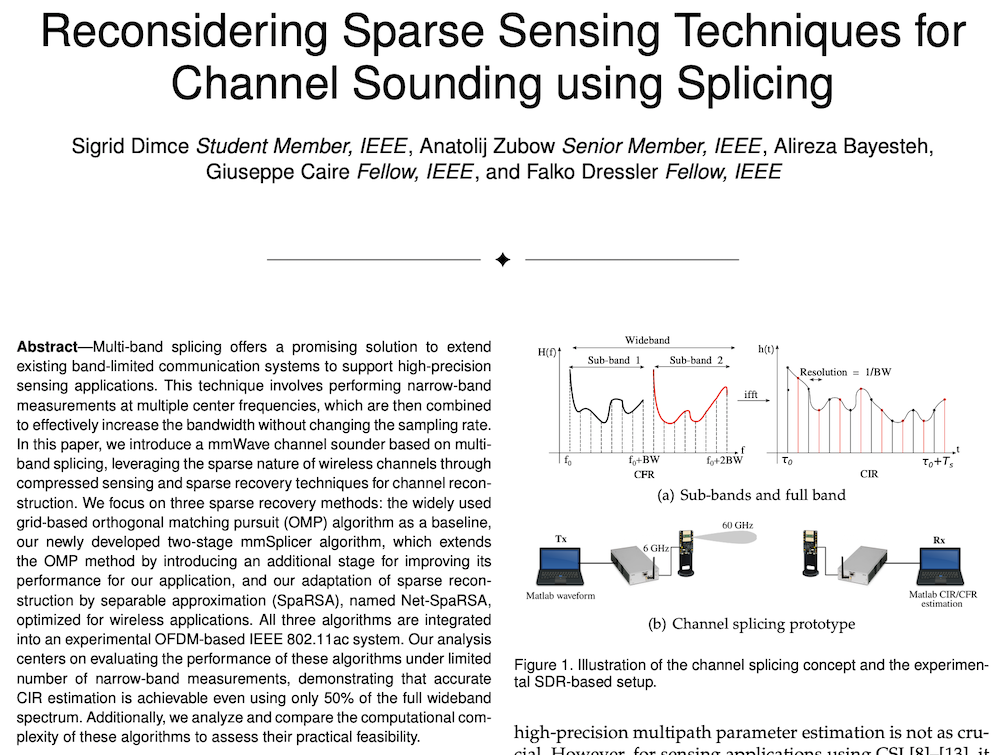Literature Database Entry
erlacher2016improving
Felix Erlacher, Wolfgang Estgfaeller and Falko Dressler, "Improving Network Monitoring Through Aggregation of HTTP/1.1 Dialogs in IPFIX," Proceedings of 41st IEEE Conference on Local Computer Networks (LCN 2016), Dubai, United Arab Emirates, November 2016, pp. 543–546.
Abstract
Network monitoring is the basis to analyze communications for preventing network attacks and misuse. Common practice for today's high throughput networks are flow-based network monitoring techniques like IPFIX. However, these solutions do not support the observation of HTTP/1.1 request/response dialogs. At the same time, we observe an increasing trend to use HTTP pipelining in the Internet as well as the use of HTTP as a generic transport protocol. IPFIX-based network monitoring and attack detection is no longer able to identify misbehavior in the complex and often interlaced HTTP dialogs. This work presents a new monitoring concept, which is able to aggregate HTTP/1.1 dialog information into bidirectional IPFIX flows. It is thereby laying the foundation for network security tools like IDS to process the resulting flows faster and more efficiently. The evaluation shows that the implemented parsing mechanism can even deal with complex HTTP traffic and clearly outperforms existing solutions.
Quick access
Original Version ![]() (at publishers web site)
(at publishers web site)
Authors' Version ![]() (PDF on this web site)
(PDF on this web site)
BibTeX ![]()
Contact
Felix Erlacher
Wolfgang Estgfaeller
Falko Dressler
BibTeX reference
@inproceedings{erlacher2016improving,
author = {Erlacher, Felix and Estgfaeller, Wolfgang and Dressler, Falko},
doi = {10.1109/LCN.2016.88},
title = {{Improving Network Monitoring Through Aggregation of HTTP/1.1 Dialogs in IPFIX}},
pages = {543--546},
publisher = {IEEE},
address = {Dubai, United Arab Emirates},
booktitle = {41st IEEE Conference on Local Computer Networks (LCN 2016)},
month = {11},
year = {2016},
}
Copyright notice
Links to final or draft versions of papers are presented here to ensure timely dissemination of scholarly and technical work. Copyright and all rights therein are retained by authors or by other copyright holders. All persons copying this information are expected to adhere to the terms and constraints invoked by each author's copyright. In most cases, these works may not be reposted or distributed for commercial purposes without the explicit permission of the copyright holder.
The following applies to all papers listed above that have IEEE copyrights: Personal use of this material is permitted. However, permission to reprint/republish this material for advertising or promotional purposes or for creating new collective works for resale or redistribution to servers or lists, or to reuse any copyrighted component of this work in other works must be obtained from the IEEE.
The following applies to all papers listed above that are in submission to IEEE conference/workshop proceedings or journals: This work has been submitted to the IEEE for possible publication. Copyright may be transferred without notice, after which this version may no longer be accessible.
The following applies to all papers listed above that have ACM copyrights: ACM COPYRIGHT NOTICE. Permission to make digital or hard copies of part or all of this work for personal or classroom use is granted without fee provided that copies are not made or distributed for profit or commercial advantage and that copies bear this notice and the full citation on the first page. Copyrights for components of this work owned by others than ACM must be honored. Abstracting with credit is permitted. To copy otherwise, to republish, to post on servers, or to redistribute to lists, requires prior specific permission and/or a fee. Request permissions from Publications Dept., ACM, Inc., fax +1 (212) 869-0481, or permissions@acm.org.
The following applies to all SpringerLink papers listed above that have Springer Science+Business Media copyrights: The original publication is available at www.springerlink.com.
This page was automatically generated using BibDB and bib2web.






